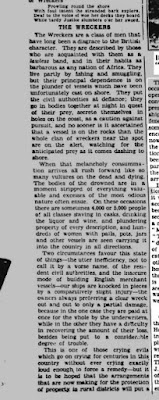Full story here https://sussexhistory.net/2020/11/29/quicksilver-and-lemons/
More on the Harbens and Corsica Hall https://www.austenfamily.org/corsica-hall/ from which the following is taken.
The oft written but unlikely to be true
Apologies for the extensive quote below (a internet search will show several versions of this account) – my observation is in bold below;
When Whitfield died the house was purchased by Francis Scott, the fifth Lord Napier. The family spent time in Sussex presumably to get respite from their chilly Scottish estates. In May 1772 Lord Napier’s son was in the house with his tutor. A loaded pistol had been carelessly left in the classroom and the young lad picked it up and pointed it at his teacher. ‘Shall I shoot you’ he joked, to which the tutor laughed and said ‘Shoot on’. The trigger was pulled and the poor teacher was shot dead. The Napier family moved away and the empty house was said to have been haunted. We now go back a few years to 1747 when the Spanish ship Nympha Americana was wrecked on the cliffs at Crowlink near Friston. The cargo included a large amount of valuable metals and currency and much was washed up on the shore. Horse Guards who were billeted nearby were tasked to protect the cargo and the story is told of one soldier who tried to steal gold coins by slipping them into his boots. He was caught when he was ordered to mount his horse but couldn’t as the weight of the gold doubloons prevented him from lifting his foot to the stirrup. Another man from East Dean was more wily as he carefully buried his loot under the sand until he could retrieve it later. He had found some blocks of heavy metal but was not sure what they were. He took them to Lewes where he sold them to a watchmaker called Thomas Harben. He acquired the blocks at a small cost but this one transaction made his fortune as his purchase was a set of virgin gold ingots. With this money Harben purchased the vacant Corsica Hall but, although he liked the house, he wanted a more picturesque setting and was so rich that he could afford to move the building brick by brick to Seaford.
Harben was to become a major force in Seaford politics. In 1823 Corsica Hall was purchased by John Fitzgerald (1775-1852), but within a year he had pulled most of the old building down and built a new house which he named The Lodge. Fitzgerald lived in the house when he was MP for Seaford between 1826 and 1832.
Source: http://www.sussexexpress.co.uk/news/a-saintly-benefactor-who-was-less-than-charitable-to-his-sons-1-956518
It likely that two separate events have become intertwined here;
John Whitfeld was the ‘wreck master’ for the 1747 recovery of the Nympha Americana. At the time he was also the owner of ‘The Lodge.’ It is so far undisputed that he made is fortune from contraband trading – including Corsican wine. Prior to Mr Whitfeld fleeing the region around 1856 he had re-named the building as Corsica Hall.
The politically active Thomas Harben (1736-1803) ‘the son’ attracted negative press and it would have been easy for detractors to conflate the smuggling history of Cosica Hall (and the suggestion of illicit fortunes from the Nympha Americana) with it’s later owner Thomas Harben.
Later, the Victorian era Harben’s appeared to ‘stretch’ the period of time the family had called Corsica Hall as their ancestral home.
In 1747, Thomas Harben (1707-1766) ‘the original’ is a clockmaker in The Cliffe, Lewes. It is possible that he would have dealt in the recovered mecury from the wreak of the Nympha Americana. However, there is no sudden (or slow) signs that his fortunes increased.
His son, Thomas Harben, who was 11 years old in 1747, went on to purchase Corsica Hall in 1782. As there is a generation and 35 years between the two events it seem unlikely they are related.
 |
| At Crowlink |
 |
| She got her man..or a man! |





